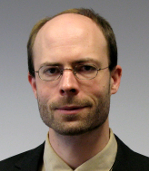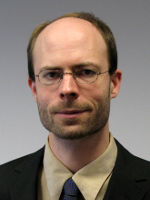

Prof. Dr.-Ing. Bodo Rosenhahn
Bodo Rosenhahn studied Computer Science (minor subject Medicine) at the University of Kiel. He received the Dipl.-Inf. and Dr.-Ing. degrees from the University of Kiel [1] in 1999 and 2003, respectively. From 10/2003 till 10/2005, he worked as post doc at the University of Auckland [2] (New Zealand), funded with a scholarship from the German Research Foundation (DFG [3]). In 11/2005-08/2008 he worked as senior researcher at the Max-Planck Insitute for Informatics [4] in Saarbruecken. Since 09/2008 he is Full Professor at the Leibniz University Hannover [5], heading a group on automated image interpretation [6]. His research interests are in the area of digital signal processing and machine learning with applications in computer vision, multi sensor fusion and optimization. His works received several awards, he published more than 180 research papers, journal articles and book chapters, holds more than 10 patents and edited several books.
Tutorial – I: Computer Vision
This tutorial on computer vision is focusing on unsupervized methods for machine learning. > It will start with an introduction to some basics in statistics and continue with methods for subspace projection and data visualization. > This will include multi-dimensional scaling and the principal component analysis. Afterwards the tutorial continues with fundamentals on neural networks and architectures for unsupervized learning, e.g. autoencoders, variational autoencoders and invertible neural networks. Such approaches can be applied to pattern analysis, conditional representation learning and anomaly detection.
Tutorial – II: Computer Vision
Multi Object Tracking for cells, microorganisms and human motion analysis
In this talk I will summarise recent results on multi object tracking using the tracking-by-detection paradigm. The challenge is to use detections (e.g. bounding boxes of objects in images) as input and the goal is to generate consistent trajectories over the entire sequence. This task can be cast as a network flow graph, which can be globally optimised using a linear programming (LP) formulation. I will present selected basics about (integer) linear programming, some simple discrete optimization tasks (e.g. graph matching), their respective LP formulations and finally explain graph based tracking and its optimisation. The talk continues with some applications, recent results e.g. on the MOTA benchmark and concludes with future research strands. Recent papers: Andrea Hornakova*, Roberto Henschel*, Bodo Rosenhahn, Paul Swoboda, (* equal contribution) Lifted Disjoint Paths with Application in Multiple Object Tracking Proceedings of the 37th International Conference on Machine Learning (ICML), July 2020 Roberto Henschel, Timo von Marcard, Rosenhahn Bodo Simultaneous Identification and Tracking of Multiple People using Video and IMUs Computer Vision and Pattern Recognition Workshops (CVPRW), June 2019 Timo von Marcard, Roberto Henschel, Michael J. Black, Bodo Rosenhahn, Gerard Pons-Moll Recovering Accurate 3D Human Pose in The Wild Using IMUs and a Moving Camera European Conference on Computer Vision, September 2018 Weblink: https://motchallenge.net
